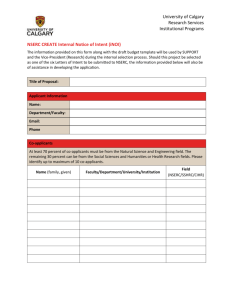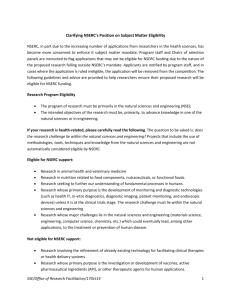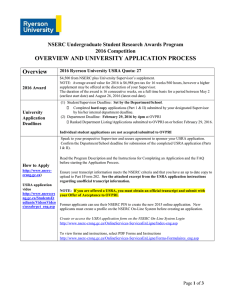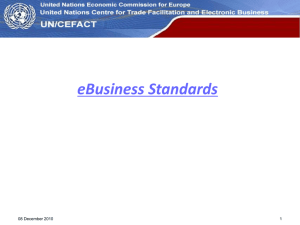• Executive Summary
advertisement
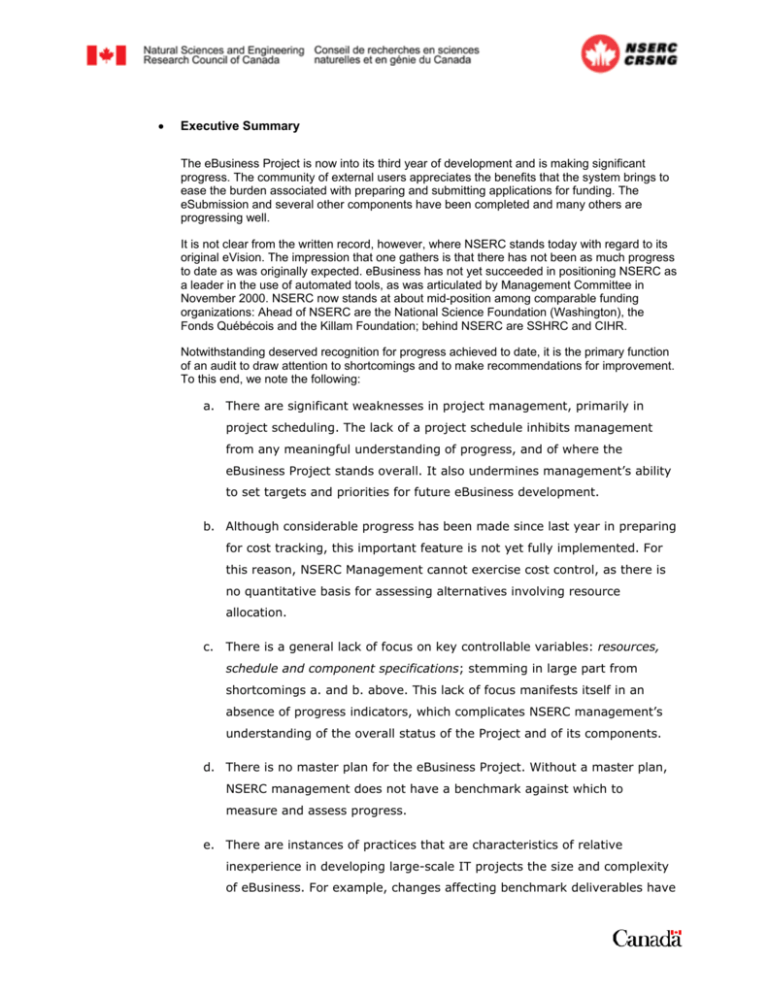
• Executive Summary The eBusiness Project is now into its third year of development and is making significant progress. The community of external users appreciates the benefits that the system brings to ease the burden associated with preparing and submitting applications for funding. The eSubmission and several other components have been completed and many others are progressing well. It is not clear from the written record, however, where NSERC stands today with regard to its original eVision. The impression that one gathers is that there has not been as much progress to date as was originally expected. eBusiness has not yet succeeded in positioning NSERC as a leader in the use of automated tools, as was articulated by Management Committee in November 2000. NSERC now stands at about mid-position among comparable funding organizations: Ahead of NSERC are the National Science Foundation (Washington), the Fonds Québécois and the Killam Foundation; behind NSERC are SSHRC and CIHR. Notwithstanding deserved recognition for progress achieved to date, it is the primary function of an audit to draw attention to shortcomings and to make recommendations for improvement. To this end, we note the following: a. There are significant weaknesses in project management, primarily in project scheduling. The lack of a project schedule inhibits management from any meaningful understanding of progress, and of where the eBusiness Project stands overall. It also undermines management’s ability to set targets and priorities for future eBusiness development. b. Although considerable progress has been made since last year in preparing for cost tracking, this important feature is not yet fully implemented. For this reason, NSERC Management cannot exercise cost control, as there is no quantitative basis for assessing alternatives involving resource allocation. c. There is a general lack of focus on key controllable variables: resources, schedule and component specifications; stemming in large part from shortcomings a. and b. above. This lack of focus manifests itself in an absence of progress indicators, which complicates NSERC management’s understanding of the overall status of the Project and of its components. d. There is no master plan for the eBusiness Project. Without a master plan, NSERC management does not have a benchmark against which to measure and assess progress. e. There are instances of practices that are characteristics of relative inexperience in developing large-scale IT projects the size and complexity of eBusiness. For example, changes affecting benchmark deliverables have been introduced without the formality of Project Charter changes and approvals that should accompany such changes, and there is a lack of follow-through on ‘critical’ and ‘important’ issues – as evidenced by project reporting. f. The widespread use of NSERC staff with limited prior knowledge and experience in systems analysis and design, has necessitated considerable training and coaching. Despite such efforts and the full cooperation and energies of the staff involved, gaps in systems know-how still remain. This is a potentially important handicap with regard to the up-coming difficult job of process transformation of the program branches (the Business Transformation Project). Recommendations The recommendations of this audit stem from the above general observations, which, in turn are an aggregated outcome of the research and interviews conducted in the course of pursuing specific lines of inquiry established by Internal Audit. Each recommendation is presented at the end of the report section of its related Line of Inquiry. Recommendations are also listed in Annex C. The following recommendations are particularly important: 7. Project Scheduling The eCentre should ensure that project scheduling be done continuously and effectively. This means that the eCentre should have the resources necessary to maintain the project schedule at all times, and that the project schedule accurately reflect all components of the eBusiness Project to the lowest level of detail needed for effective control. For project scheduling to be done effectively, the eCentre must be provided with appropriate inputs. To this end, all project participants – the eCentre, ISD and program branches – should provide reasonably accurate estimates of the time and resources they plan to use in the project, and should keep these estimates up-to-date at all times. b. Cost-Tracking The eCentre, based on the experience of the pilot, should implement cost tracking as soon as possible. 3. Master Plan NSERC management should request the eCentre to prepare an eBusiness Master Plan and keep it up-to-date. This Plan should scope the work remaining to complete the implementation of the original eBusiness vision, updated as appropriate with work completed to date (including the Project Blueprint), as well as changes in the business environment, and developments in technology since the original Plan was created. The Plan should also be time-scaled and costed, so that NSERC management can exercise meaningful control. 4. Training The eCentre should ensure that all staff involved in process transformation are fully trained in the appropriate techniques. The eCentre should provide the Project Scheduler with a full range of training and coaching in the practice of project scheduling, and in the specific use of MS Project, which is NSERC’s chosen scheduling software.
